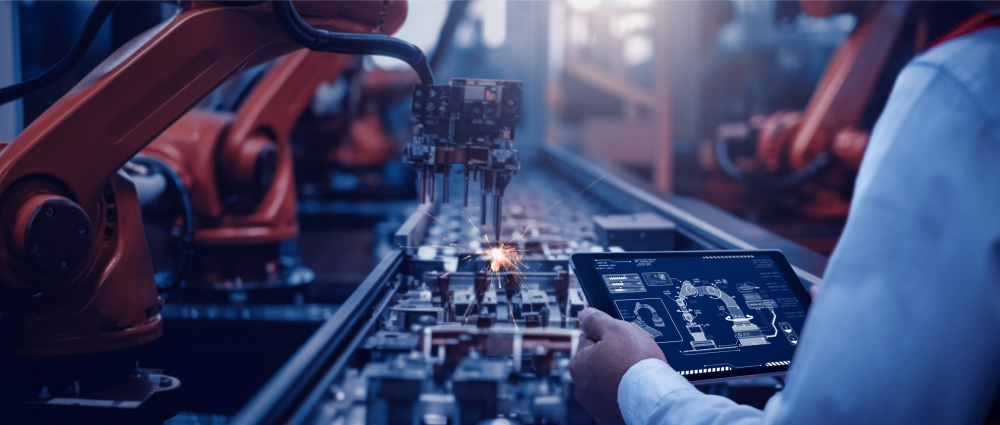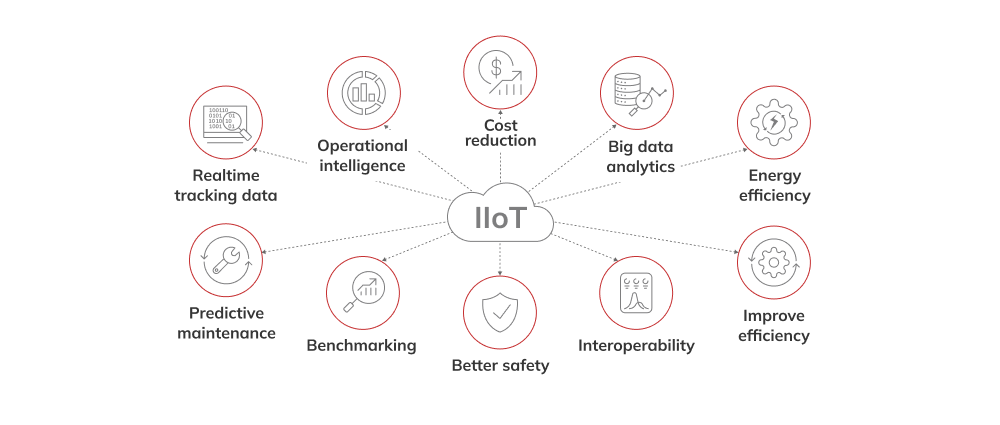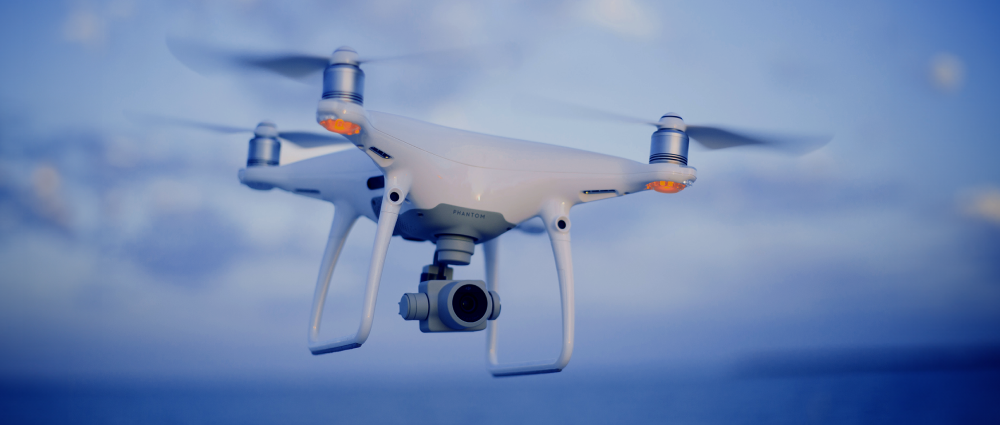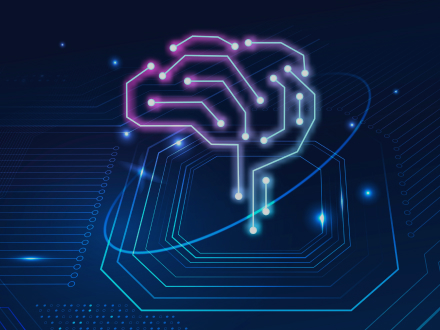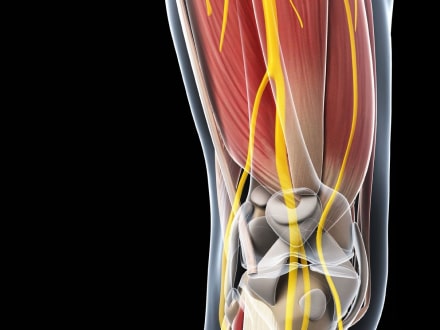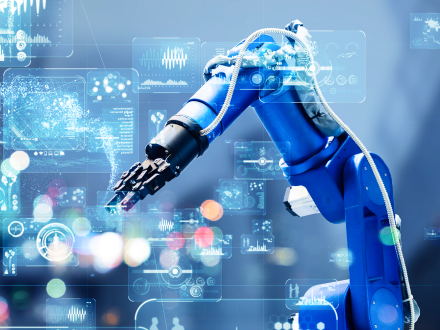The revolution in manufacturing is not merely about the application of IT solutions to existing processes, but rather the creation of a dynamic and integrated ecosystem powered by digital manufacturing solutions where speed, accuracy, and flexibility are paramount. The integration of advanced technologies such as big data, IoT, AI, and ML is not just a complementary phase but a cornerstone, fundamentally changing the way factories operate and products are crafted. The forecast for the market indicates a significant surge, from USD 307.87 billion in 2023 to an expected USD 733.75 billion by 2028.
In the midst of this technological expansion, it is critical to distinguish which digital manufacturing solutions will most profoundly impact operations efficiency and financial success. For businesses facing the transition to digital, this guide aims to cut through the complexity and lay out a comprehensive, clear roadmap, enabling them to harness the full potential of technology.
AI, ML and IIoT
As the wave of digital change sweeps through the manufacturing sector, the roles of Artificial Intelligence (AI) and Machine Learning (ML) are becoming more intertwined with everyday operations, reflecting the widespread impact of the Industrial Internet of Things (IIoT). This fusion is pushing the boundaries of traditional industry practices and the nature of inter-industry collaboration.
The concept of IoT is not a futuristic vision but rather a current reality that’s being energetically embraced by various industries. According to a study from Fortune Business Insights, industries including healthcare, manufacturing, agriculture, transportation, energy, and telecommunications are at the forefront of incorporating IoT solutions in 2022.
With this shift towards advanced technology, it’s worth delving into particular examples of how AI, ML, and IoT are being utilized within these fields. Their deployment is transforming standard procedures by fostering preemptive strategies for tackling issues, providing immediate analysis of data, and forming the basis for decision-making processes that are deeply anchored in data analytics.
Intuitive production in the automotive industry
Now, let’s zoom in on a specific sector. The automotive industry provides a clear example of how AI and IIoT can lead to more intuitive production processes. Digital manufacturing software leverages the data from sensors embedded in an IIoT network that gather real-time data on everything from component positioning to machine efficiency. This data is scrutinized by artificial intelligence algorithms automatically to identify discrepancies and prevent holdups, enabling rapid interventions that maintain strict safety and quality standards. This system not only sharpens the accuracy of production but also proactively mitigates machinery wear, thus reducing idle times and enhancing output.
However, this goes beyond simple assembly monitoring. With AI’s predictive capabilities, production flows can be fine-tuned in response to fluctuating demand, resulting in a nimble, high-performing supply chain. The realm of quality assurance has similarly evolved, with digital manufacturing software featuring AI-enabled visual inspection tools thoroughly examining completed vehicles against precise benchmarks. The fusion of AI with IIoT surpasses old-school production techniques, paving the way for a new age of improved efficiency where production is fine-tuned for uniformity, excellence, and adaptability to the changing market.
Quality assurance, customization, and predictive insights
Moving from the general to the particular, AI systems in manufacturing are not confined to predictive maintenance. In electronics manufacturing, here AI and ML algorithms continuously scrutinize microchips and circuit boards at speeds impossible for human inspectors. They detect microscopic defects, ensuring a high level of product quality. Furthermore, by leveraging AI and live data from IIoT, should a specific smartphone model experience a sudden spike in demand in a given region, the production schedule can be fine-tuned to amplify production of that model, guaranteeing that supply aligns with demand.The BMW Group is a perfect example of how AI and IIoT benefits the industry as a whole. AI aids in automating tasks in manufacturing and logistics, such as quality checks using image data. Cameras on the assembly line continuously capture product images, which AI systems assess for defects, ensuring ongoing quality control. This technology not only enhances product quality but also eases employee workload.Moreover, the company leverages data science to ensure data-driven decision-making. For instance, sensors gather status data for machine maintenance to anticipate potential breakdowns. An indicator like elevated power usage in a conveyor system can signal wear, allowing timely component replacements based solely on actual wear.Elevating operational intelligence in the beverage industry
The application of AI and IoT extends far beyond the realm of automotive manufacturing. When applied to the beverage industry, this synthesis of AI and IIoT continues to demonstrate its value. Sensors monitor parameters like consistency, pH levels, and temperature of beverages. AI’s analytical prowess ensures that beverages maintain a consistent taste across vast production volumes. Moreover, by analyzing consumer trends, AI can anticipate demand surges for specific beverages, guiding manufacturers in their production strategies.


Redefine your manufacturing process with our innovative digital solutions.
Step into the era of efficiency and precision to elevate your production.
Advanced robotics and automation
Robotics is another technology standing at the forefront of technological innovation, elevating the level of precision and efficiency in the manufacturing industry by turning static machines into versatile actors that can adapt to changing conditions as needed. Robotics is revolutionizing manufacturing, not just by boosting precision and output but by granting robots the ability to adapt and evolve. Modern robots, powered by advanced software and hardware, have moved past rigid tasks to learning and collaborating with humans, pushing efficiency and productivity to levels once confined to science fiction.
From static to dynamic
Gone are the days of robots performing monotonous, programmed routines. In contrast, modern robots are flexible, capable of multitasking, and responsive to the changing needs of manufacturing. Take, for instance, Amazon’s Robin system, which demonstrated its dynamic capability by sorting over a billion packages in 2022. With Amazon deploying over 750,000 robots globally, it’s not just about quantity; the focus has shifted to the versatility of these machines, which improves resource use and cost-effectiveness in industrial operations.Safety & human augmentation with cobots
The integration of robotics into the manufacturing workforce has entered a new phase with the advent of ‘collaborative bots’ or ‘cobots.’ These machines are designed to work alongside humans, enhancing safety and augmenting human capabilities. This collaboration creates a workplace where mechanical precision meets and amplifies human ingenuity, fostering a more productive and harmonious production environment.
Drones: the new age of aerial technology
Drones add another perspective to this landscape, they are no longer just tools for aerial photography or recreational devices. Drones reshape manufacturing processes. They can quickly move goods across large warehouses, monitor vast production areas, or even assist with inventory management by scanning products from above. Their ability to reach places that are time-consuming or hazardous for humans makes them invaluable assets. For instance, drones can inspect large outdoor machinery or infrastructure components, ensuring their health and operational readiness without putting human workers at risk.
Adaptive learning & sensory perception
Today’s robots are equipped with machine learning algorithms, allowing them to adjust and improve their operations continually. Paired with advanced sensory perception, robots can detect and interpret subtleties in their environment, enabling real-time adaptation. This level of responsiveness ensures that manufacturing tasks are carried out with maximum precision and efficiency, marking a significant leap from the static, program-dependent robots of the past.
Cloud computing
Cloud computing has become an indispensable tool in digital manufacturing software, driving not only operation optimization but also enabling seamless global collaboration. It transcends simple data storage to allow for comprehensive data access, analysis, and utilization in real time. This leads to more intelligent decision-making, process optimization, and the creation of innovative business models. In the face of escalating complexities of global operations and rising customer expectations, the cloud stands out as a robust solution offering scalability, flexibility, and inventive answers to these modern challenges.
Unprecedented scalability
Consider a startup manufacturer that suddenly experiences a massive surge in demand. Traditional IT infrastructure might crumble under pressure, but with cloud computing, manufacturers can seamlessly scale up digital manufacturing software resources without significant upfront investments. This elasticity also means that during slower periods, manufacturers can reduce resources, maintaining cost-effectiveness. Such scalability ensures that businesses can adapt quickly to market changes without the typical lag of physical infrastructure adjustments.
Real-time analytics & insights
For sectors with complex data sets, such as automotive manufacturing, the cloud’s real-time data processing is a game-changer. It facilitates quick adjustments in response to logistical challenges, like delays in parts delivery, by allowing for immediate production schedule recalibrations. The cloud also connects global teams, granting them instant access to digital manufacturing software data and applications, thus harmonizing workflows and hastening the decision-making process.
Enhanced collaboration
With suppliers, distributors, and production units often scattered across the globe, efficient communication is vital. Cloud platforms enable teams in different geographies to access the same digital manufacturing software data and applications, streamlining decision-making. For example, a design team in Germany can instantly share prototypes with a production unit in China, ensuring accurate and timely production.
Security and compliance
Security is another pillar of cloud computing, with leading providers offering advanced security measures that surpass individual company capabilities. This robust protection is essential for complying with stringent regional and international regulations, especially in highly regulated industries like pharmaceuticals. Cloud services provide comprehensive audit trails, encryption, and compliance tools, safeguarding sensitive data and maintaining regulatory adherence.
Innovation and evolving business models
The cloud is not just an operational tool; it’s a springboard for innovation. By leveraging cloud-powered AI and ML algorithms, manufacturers can tap into a wealth of insights for product development and enhancement. It also paves the way for novel business models, such as ‘Software as a Service’ (SaaS), where companies expand their offerings beyond physical products to include digital services and analytics, thus enriching their value proposition.General Electric exemplifies the practical application of cloud computing, having transformed its business operations through improved data management, streamlined collaboration, and the provision of real-time services, all of which contribute to faster product development and launch cycles. This showcases the cloud’s potential not just to support but to actively propel forward the manufacturing industry.Blockchain
Much like cloud computing reshapes data management and analysis, the integration of blockchain technology brings a similar transformative potential to various aspects of manufacturing, offering heightened transparency in supply chains, robust protection for intellectual property, streamlined transaction processes, and the promise of a decentralized production model. Just as cloud computing opened doors for real-time analytics and global collaboration, blockchain is poised to provide a new level of integrity and security, setting the stage for a future where digital manufacturing software operations are more efficient, secure, and transparent.
Transparent supply chains
The journey of a product from raw material to the end consumer involves multiple steps, and ensuring transparency across these steps is a challenge. Blockchain records every transaction or change chronologically and cannot be altered retroactively. Consider the diamond industry: blockchain technology is now used to trace the journey of each diamond, ensuring it’s ethically sourced and genuine. This brings unparalleled confidence to consumers and stakeholders about the product’s origins and journey.Expanding beyond the diamond industry, major players like Honda and Ford have taken innovative steps by developing draft standards for blockchain-based “battery passports” to track automotive batteries’ environmental and social footprints. These passports will detail a battery’s supply chain, including material origins, recycled component percentages, CO2 emissions, and human rights considerations.Protecting intellectual property
In the battle against counterfeit products, blockchain technology emerges as a potent weapon for manufacturers from diverse sectors. By recording design details, specifications, and other related data on a decentralized ledger, manufacturers can authenticate genuine products. For instance, luxury brands could embed blockchain data into their products, allowing buyers to verify their authenticity, thereby reducing the impact of counterfeit goods.
Streamlined payments and contracts
Traditional financial transactions, particularly those spanning international borders, are often fraught with delays and errors. Blockchain’s smart contracts are engineered to circumvent these challenges, automating transactions which, in turn, enhances efficiency and accuracy. Taking the example of an auto parts supplier, a smart contract can be established to automatically execute payment upon the successful delivery and verification of goods, thereby accelerating the transaction process and minimizing the likelihood of disputes.
Decentralized manufacturing networks
Moreover, blockchain is the key to unlocking decentralized manufacturing – a concept that stands to revolutionize how and where products are made. In this envisioned future, individual production units, possibly including home-based 3D printers, could connect through a comprehensive, blockchain-enabled network. This would empower designers to dispatch production orders to the nearest unit capable of manufacturing the item, vastly improving the speed of production and delivery. Such a shift towards decentralization, backed by blockchain’s inherent transparency and security, has the potential to significantly alter the production landscape, making it more dynamic and responsive to market demands.
Enhanced data security and reliability
In the context of manufacturing, where sensitive data is the lifeblood of operation – ranging from proprietary designs to customer information – security is of the utmost importance. As incidents of data breaches escalate, blockchain presents itself as a formidable line of defense. Each entry into the blockchain requires a consensus, which reinforces data integrity and reliability. This attribute ensures that vital information remains protected against cyber threats, offering peace of mind to both manufacturers and their clients.
Each of these elements – protecting against counterfeit goods, streamlining transactions with smart contracts, decentralizing manufacturing networks, and enhancing data security and reliability – demonstrates how blockchain can create a more interlinked and coherent ecosystem. Through blockchain, the industry can achieve a secure, efficient, and reliable production process, mirroring the comprehensive connectivity and integrity that the technology promises.
Virtual and augmented reality
The last but not the least are virtual and augmented reality (VR & AR) technologies that have catapulted from being just cutting-edge gaming tools to indispensable assets in the manufacturing landscape. With their ability to create immersive digital environments and overlay digital information onto the real world, these technologies are redefining how manufacturers design, test, produce, and even train their workforce.
Product design and prototyping
In product design and prototyping, where traditional methods can be laborious and costly, VR & AR represent a transformative leap forward. They enable designers to visualize and iterate on products in a 3D virtual environment, streamlining the design process and reducing the need for physical models. Automotive engineers, for example, can virtually inhabit a car’s interior, tweaking designs in real-time – an efficiency that parallels the streamlined processes enabled by blockchain’s smart contracts.
Maintenance and repair assistance
AR is particularly transformative in the maintenance and repair operations, offering a hands-on, interactive guide to technicians. AR glasses can project real-time data and step-by-step repair instructions over the actual machinery, akin to how blockchain technology enhances transparency in production. An aircraft technician, equipped with AR, can receive layered information about the engine they are inspecting, ensuring precision and reducing errors.
Training and skill development
Training and upskilling, critical for maintaining a competent workforce, are areas where VR offers unparalleled advantages. VR offers a risk-free environment for this. New recruits can navigate a virtual factory floor, interact with machinery, and practice procedures – all without the risks associated with real-world training. Similarly, AR can provide on-the-job training, where workers receive real-time feedback and instructions as they perform tasks.For example, Rolls-Royce has harnessed the power of virtual reality in their training programs for business aviation. They offer remote VR training that delves into the Rolls-Royce BR725 engine, a powerhouse for the Gulfstream G650 business aircraft. Completing this intensive two-day course equips participants with the skills to service and conduct non-routine maintenance on the engine. Andy Robinson of Rolls-Royce emphasized the pivotal role of digitalization in their operations and described the VR tool as a “game-changer” for technical training. While VR training doesn’t replace hands-on experience, it offers distinct advantages, such as eliminating the need for a full-sized training engine and providing lifelike, interactive scenarios under the guidance of an instructor. This innovative approach ensures that training in manufacturing remains effective, efficient, and safe.Remote collaboration
In an era where global collaboration is the norm, VR & AR bridge distances by enabling teams from across the world to work together in a shared virtual space, echoing the collaborative opportunities provided by cloud computing. Designers and technicians can interact with a product or conduct repair operations in unison, despite being continents apart. This capability is especially crucial in minimizing the impact of travel restrictions and the need for physical presence, promoting a seamless and continuous workflow.
In essence, VR & AR technologies are not standalone marvels; they integrate deeply with other digital innovations to create a cohesive, cutting-edge manufacturing landscape. They align with the fundamental shifts towards increased connectivity, real-time collaboration, and enhanced efficiency that are hallmarks of contemporary production processes, driven by manufacturing digital transformation.
The imperative of integration
The successful manufacturers of tomorrow will likely be those who understand that these technologies are not isolated pieces but parts of a larger puzzle. Integration is key – the harmonious blending of AI, ML, blockchain, VR, and AR is what will lead to a new era of factory automation, marked by smarter solutions and more resilient operations. Digital manufacturing companies are at the forefront of this integration, pioneering the melding of these technologies to redefine the landscape of industrial production.
In conclusion, the digital revolution in manufacturing is not just about adopting new technologies; it’s about weaving them into the fabric of industrial operations to create a more connected, intelligent, and adaptable production environment. As the lines between the physical and digital worlds continue to blur, the digital manufacturing companies stand on the brink of a new industrial renaissance, driven by digitization.
FAQ
Digital manufacturing solutions encompass a suite of advanced technologies that integrate digital and physical production processes. These solutions include computer-aided design (CAD), computer-aided manufacturing (CAM), 3D printing, robotics, artificial intelligence, and the Internet of Things (IoT). They enable manufacturers to create a digital twin of the manufacturing process, allowing for simulation, optimization, and control of the production line in a virtual environment before physical production begins. This approach improves efficiency, flexibility, and time-to-market while reducing costs and enabling mass customization. By harnessing real-time data and analytics, digital manufacturing solutions facilitate predictive maintenance, enhanced supply chain management, and overall better decision-making, leading to smarter, more agile, and more sustainable manufacturing operations. Digital manufacturing companies leverage these solutions to push the boundaries of what’s possible in manufacturing.
Digital transformation in manufacturing streamlines operations by integrating advanced technologies such as AI, IoT, and robotics, resulting in increased efficiency and reduced operational costs. It enables predictive maintenance, minimizing downtime, and allows for greater scalability and flexibility in production. Real-time data analytics from digital transformation help manufacturers make informed decisions, optimize supply chains, and respond quickly to market changes. Ultimately, it enhances product quality, improves customer satisfaction, and fosters innovation, keeping manufacturers competitive in a rapidly evolving industrial landscape.
Digital manufacturing is indeed suitable for small businesses, offering them scalability, flexibility, and efficiency that can level the playing field with larger competitors. By adopting technologies such as 3D printing, small enterprises can produce small batches cost-effectively, customize products, and rapidly prototype. Digital tools can also streamline operations, reduce waste, and enhance quality control with more precision. While the initial investment and the learning curve may pose challenges, the long-term benefits of improved productivity and the ability to quickly adapt to market changes can be substantial, making digital manufacturing a viable and strategic option for small businesses looking to innovate and grow. Digital manufacturing companies often provide scalable solutions that are suitable for businesses of all sizes, including small enterprises.
Digital manufacturing plays a pivotal role in promoting sustainability and addressing environmental concerns by enabling more efficient use of resources and reducing waste through precise production techniques such as additive manufacturing (3D printing). It facilitates the optimization of supply chains, reducing the carbon footprint associated with logistics. By leveraging data analytics and IoT, digital manufacturing can also enhance energy efficiency within production facilities and enable the recycling of materials. Furthermore, it supports the creation of sustainable products through life cycle assessments and the use of eco-friendly materials in the design process, ultimately contributing to a more sustainable manufacturing industry with a reduced environmental impact. Digital manufacturing companies often provide scalable solutions that are suitable for businesses of all sizes, including small enterprises.
Adopting digital manufacturing solutions presents several challenges, including significant upfront investment in technology and training, which can be particularly daunting for small to medium-sized enterprises. There’s also the need for a cultural shift within organizations to embrace continuous innovation and learning. Integrating new digital systems with existing IT infrastructure often poses technical difficulties, and ensuring data security in an increasingly interconnected environment becomes more complex. Additionally, finding and retaining skilled workers who can navigate advanced digital tools is a growing concern. Overcoming these obstacles requires careful planning, a willingness to invest in human capital, and a strategic approach to digital integration.


